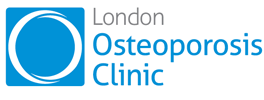Introduction
Margaret, a 72-year-old retired teacher, always enjoyed walking in her local park. Over the last few years, she noticed her pace slowing down, her balance less steady, and climbing stairs more tiring. A recent stumble revealed something more serious: not only was her bone density low, but she was also losing muscle mass. Her specialist diagnosed her with osteosarcopenia—a condition where both bones and muscles weaken together, dramatically increasing the risk of falls and fractures.
This emerging condition is becoming a focus of international research. In this article, we’ll explore what osteosarcopenia is, why it matters, and most importantly, what you—or your loved ones—can do to protect strength, stability, and independence.
Why Osteosarcopenia Matters
The Overlooked Link Between Bone and Muscle
Osteoporosis (weak bones) and sarcopenia (muscle loss) have long been studied separately. But new evidence shows they often occur together, forming a dangerous duo called osteosarcopenia.
- Osteoporosis makes bones fragile and prone to fractures.
- Sarcopenia reduces muscle strength and balance, making falls more likely.
- Together, they multiply risk: weaker muscles can’t protect fragile bones during a fall, leading to serious injuries such as hip fractures.
UK & Global Impact
- In the UK, 3.5 million people live with osteoporosis, and up to 30% of adults over 60 show signs of sarcopenia.
- A recent meta-analysis published in Ageing Research Reviews found that patients with both osteoporosis and sarcopenia were twice as likely to suffer falls and fractures compared to those with one condition alone.
- These conditions don’t just affect mobility—they lead to loss of independence, hospital admissions, and emotional distress.
At the London Osteoporosis Clinic, we see osteosarcopenia as a syndrome of ageing that can—and must—be addressed early, combining bone and muscle care rather than treating them separately.

What Causes Osteosarcopenia?
Several overlapping factors contribute:
- Ageing: Natural decline in both bone density and muscle mass.
- Hormonal changes: Menopause in women, lower testosterone in men.
- Nutrition: Insufficient protein, vitamin D, or calcium intake.
- Sedentary lifestyle: Lack of strength training or weight-bearing activity.
- Chronic illness or medication use: Steroids, diabetes, rheumatoid arthritis.
- Inflammation: Chronic low-grade inflammation accelerates bone and muscle breakdown.
How It’s Diagnosed
At LOC, diagnosis involves a dual assessment:
- Bone Mineral Density (DEXA) Scan – to measure osteoporosis.
- Muscle Mass & Function Tests – grip strength, gait speed, or lean muscle mass analysis.
- Comprehensive Risk Evaluation – reviewing medical history, diet, activity level, and medications.
By assessing both bone and muscle health together, we can identify osteosarcopenia before fractures or serious mobility loss occur.
Dual-Support Strategies: Protecting Bones and Muscles Together
The good news? Osteosarcopenia is not inevitable. With the right plan, you can strengthen both bone and muscle.
1. Exercise Prescription
- Resistance training: Dumbbells, bands, or bodyweight exercises stimulate both bone and muscle.
- Weight-bearing activities: Walking, dancing, stair climbing improve bone density.
- Balance & stability training: Yoga, Pilates, tai chi reduce fall risk.
(LOC physiotherapists create safe, personalised exercise programs for patients at all levels.)
2. Nutrition for Dual Strength
- Protein: Aim for 1.0–1.2 g per kg of body weight daily. Eggs, fish, dairy, lentils are excellent sources.
- Calcium: Around 700–1000 mg/day through dairy, leafy greens, fortified foods.
- Vitamin D: Essential for bone and muscle; supplements often needed in the UK due to low sunlight.
- Other nutrients: Magnesium, vitamin K2, and omega-3s support musculoskeletal health.
3. Medical Interventions
- Medications for osteoporosis: Bisphosphonates, Denosumab, or anabolic therapies.
- Emerging therapies: Research is exploring drugs that target both muscle and bone metabolism simultaneously.
- Fall prevention strategies: Reviewing medications, correcting vision, and improving home safety.
4. Monitoring & Long-Term Care
- Regular follow-ups with bone density scans.
- Muscle strength tracking (grip strength, walking tests).
- Holistic care including endocrinology, nutrition, and physiotherapy specialists.
Real-World Story: Prevention in Action
One of our patients, Peter (68), came to LOC after a minor fracture revealed low bone density. Tests also showed muscle weakness. With a structured resistance training plan, protein-rich diet, and osteoporosis treatment, Peter improved both bone density and muscle strength within 18 months. Today, he continues gardening and hill walking—confident, independent, and pain-free.
Challenges in Awareness
Despite its importance, osteosarcopenia remains under-diagnosed. Many healthcare systems treat osteoporosis and sarcopenia separately, missing the compounded risk. In the UK, routine screening for sarcopenia is limited. LOC is working to raise awareness through patient education, clinician training, and research collaborations.
Conclusion & Call-to-Action
Osteosarcopenia may sound like a complex medical term, but its reality is simple: when bones and muscles weaken together, falls and fractures become more likely. The encouraging news is that with early detection, dual-support strategies, and expert care, patients can maintain strength, independence, and quality of life well into older age.
At the London Osteoporosis Clinic, we specialise in comprehensive musculoskeletal health—assessing bone and muscle together, tailoring treatment, and guiding you toward resilience.
👉 Don’t wait for a fall to take action. Book your Consultation. Take the first step toward stronger bones, stronger muscles, and a stronger you.


